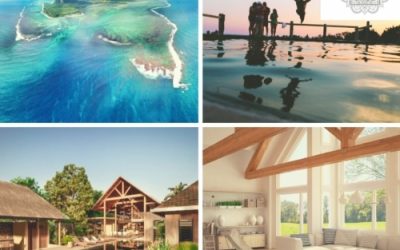Mauritius is a dream destination, renowned for its lush vegetation, crystal clear waters and white sandy beaches. Beyond its paradise landscapes, the island is full of cultural and natural treasures. Between hiking and relaxing breaks, take a moment to visit historical monuments and fascinating temples, witness to the history of the Indian Ocean jewel. Discover our selection of 15 must-see sites in Mauritius, not to be missed during your stay.
Cultural and religious sites: immersion in the island's wealth
Ganga Talao: the sacred lake of Grand Bassin
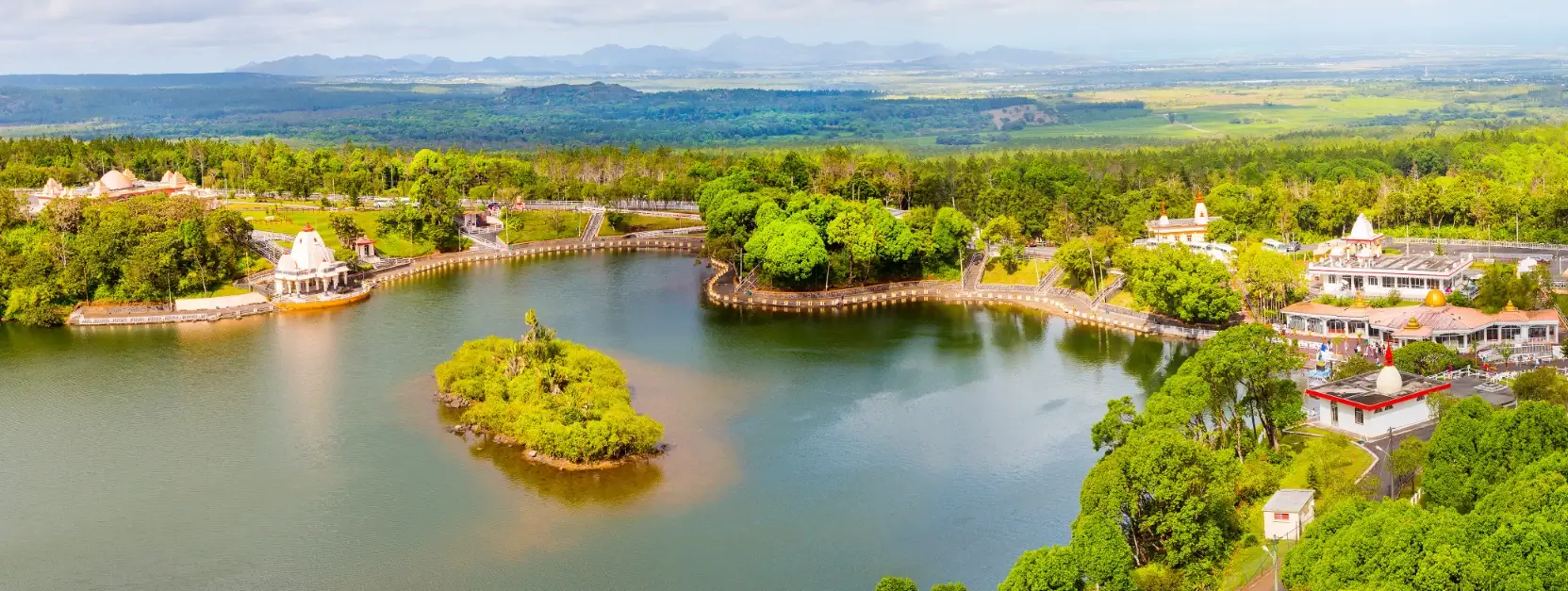
Also known as the Great Basin, Ganga Talao is a sacred place for the Hindu community of Mauritius. This volcanic lake is surrounded by several majestic temples, honoring the deities Shiva, Hanuman, Durga, Ganesh, Lakshmi, Vishnu, Parvati and Kartikeya.
You can admire impressive statues depicting Hindu divine figures, including Shiva at the entrance to the site, measuring 33 meters high.
By discovering the colorful temples of the Great Basin, like Shiv Mandir, you will be invaded by the spiritual atmosphere that emerges from it. The peaceful natural setting of Ganga Talao makes it a place of tranquillity, conducive to meditation and contemplation. Take the signposted trail that surrounds the lake to explore the surrounding area. You may have the chance to meet monkeys in freedom during your walk on this sacred place. A magical moment for nature lovers.
Every year, the celebration of Maha Shivaratri brings together many pilgrims in Grand Bassin. This traditional festival takes place between February and March. The festivities mark the triumph of good over evil and are punctuated with prayers and rituals in honor of Lord Shiva. Maha Shivaratri is the perfect time to experience the intensity of this Hindu festival.
Return: Ganga Talao is located in Savanne district, south of Mauritius. Access is easily via the Bois Chéri road. Large car parks are available for tourists and pilgrims. Bus lines also serve the site.
Our Lady Helpers: the Church of Cap Malheureux
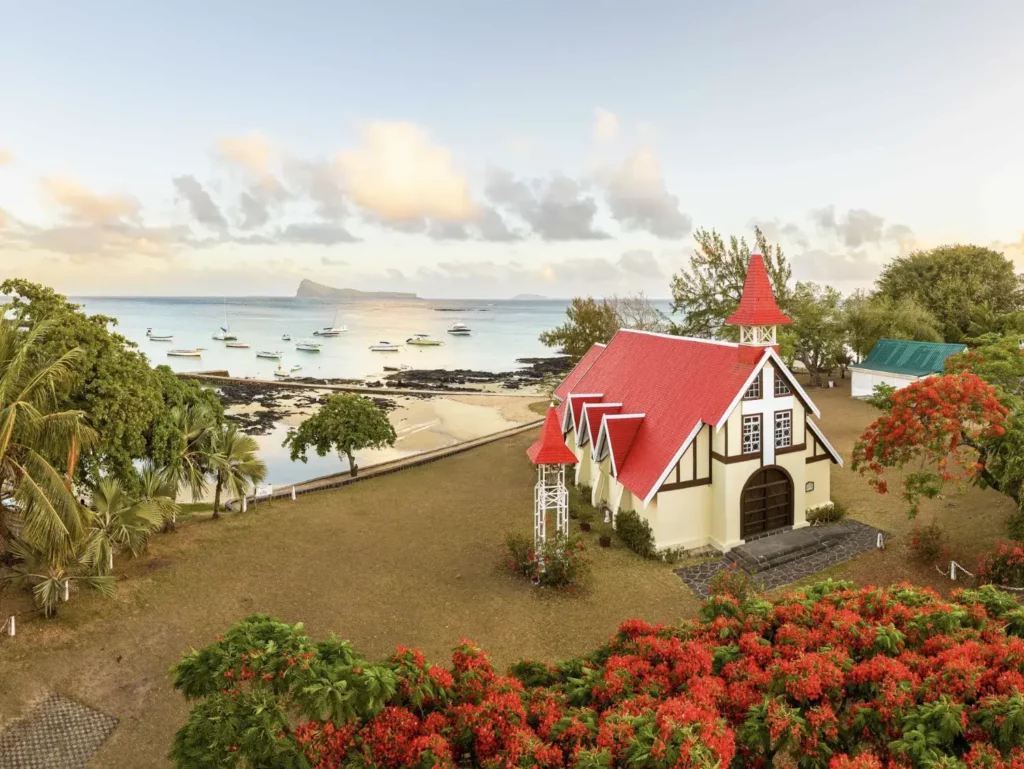
Represented on many postcards of Mauritius, Notre-Dame Auxiliatrice is the perfect place to take beautiful pictures. Ivory walls, bright red roof, turquoise water and blue sky, contrasts are striking.
Built in 1938, the wooden church is located at the northern tip of the island, in the picturesque village of Cap Malheureux. The building offers stunning views of the Indian Ocean and neighbouring islands, such as Mire's Corner, Plate Island and Gabriel Island. A place of pilgrimage for the faithful, this small church with authentic charm is a popular destination for tourists for its idyllic setting and tranquility. Attend a Sunday Mass and let yourself be rocked by the songs and peaceful atmosphere of this emblematic place.
Only 10 minutes from Grand Bay, on a fishing beach, Notre-Dame Auxiliatrice is easily accessible and deserves a place of choice in your discovery itinerary of Mauritius.
Return: To visit the Church of Our Lady Helpful of Cap Malheureux, take Route B13 along the coast of Rivière du Rempart. This trip will offer you a breathtaking view of the coastal landscapes of Mauritius.
Aapravasi Ghat: historic monument of Port Louis
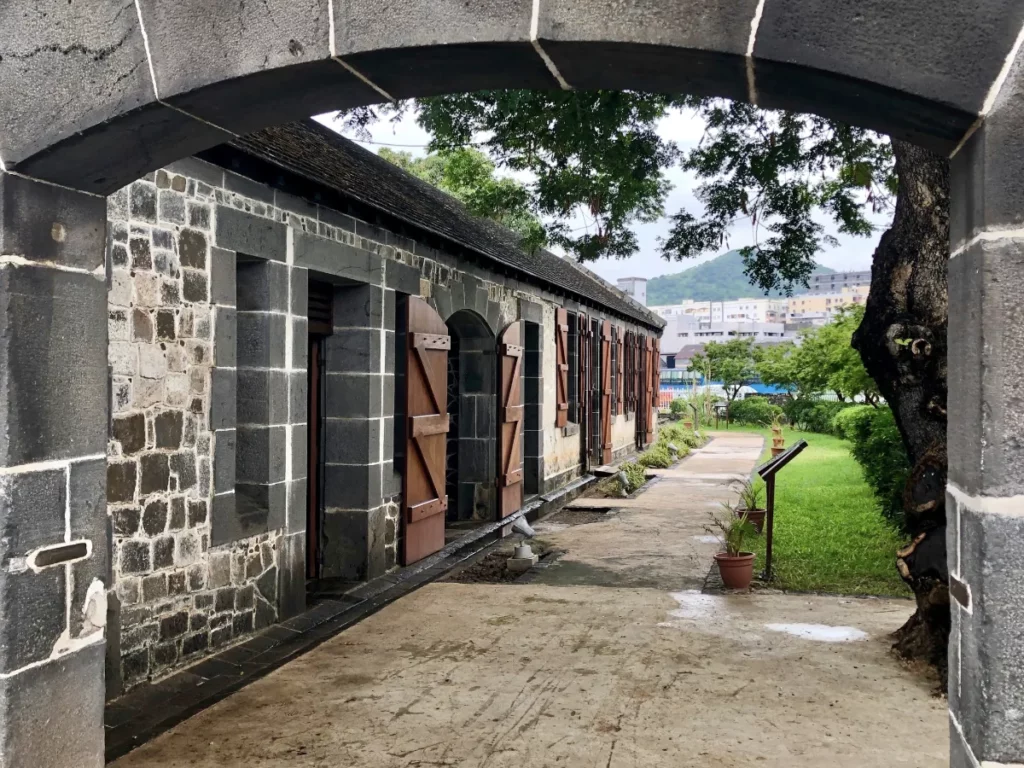
In Hindi, Aapravasi Ghat means dock of immigrants. This place has been a UNESCO World Heritage Site since 2006.
Located in Port Louis, the capital of Mauritius, the site gathers the remains of an immigration centre created by the abolition of slavery by the British Empire. It represents the arrival of the first free workers under contract in Mauritius, employed in sugar plantations. This is a significant event for the country.
By visiting Aapravasi Ghat, you can discover the historical buildings and structures that testify to the passage of immigrants, mainly of Indian origin. The site also offers exhibitions and detailed information on this important period of Mauritian history.
Go there: The site of Aapravasi Ghat is easily accessible by bus (Immigration Square Station), by car and even by foot since it is located in the heart of downtown Port Louis.
Saint-Gabriel Cathedral of Rodrigues: the fervor of parishioners
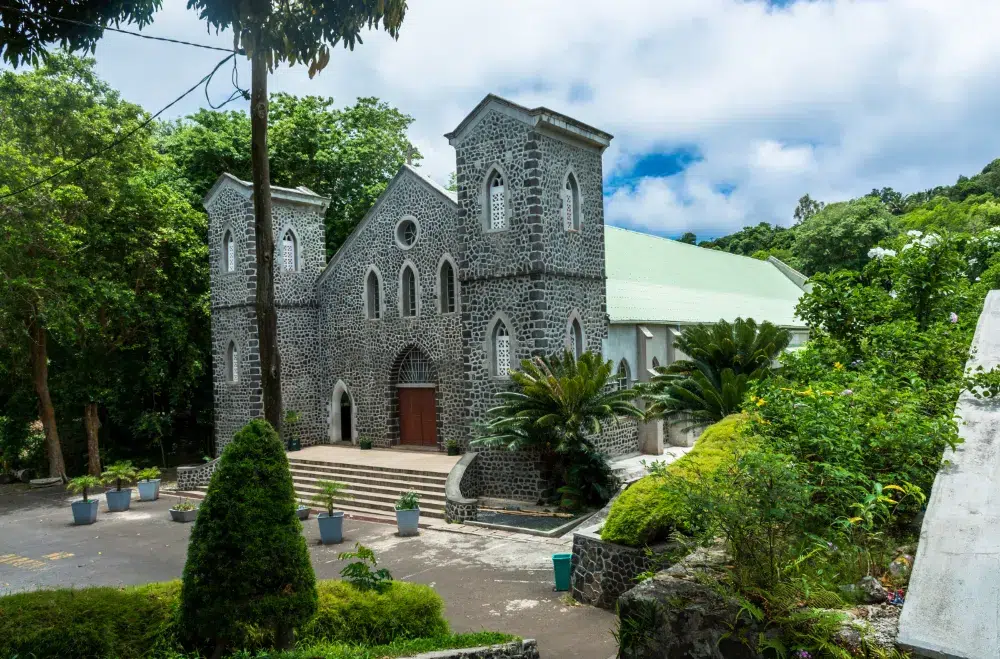
To visit Saint-Gabriel Cathedral, you must visit Rodrigues Island, 580 km northeast of Mauritius. This cathedral, the largest in the diocese of Port Louis, is distinguished by its unique history. Built thanks to the collective effort of parishioners, the building was built in 1939, after three years of work. The faithful brought there, in sometimes difficult conditions, the materials necessary for its construction: sand, stones, coral blocks, coming from the four corners of the island. Its architecture is impressive.
Visiting Saint-Gabriel Cathedral is an opportunity to spend a few days on Rodrigues Island and discover this corner of paradise spared by mass tourism.
Go there: It is possible to fly from Sir Seewoosagur-Ramgoolam International Airport in 1h30.
Tamil Surya Oudaya Sangam Temple: place of worship in Grand Bay
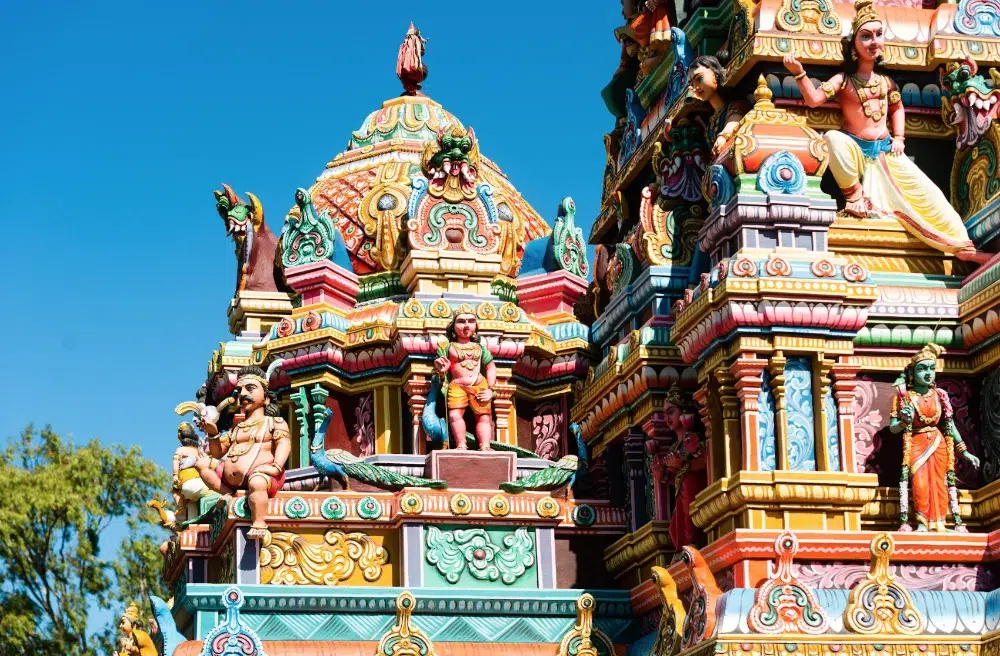
The Tamil Surya Oudaya Sangam Temple is one of the most impressive Hindu religious sites in Mauritius. This captivating temple is distinguished by its bright colours and the precision of its architectural details. It is decorated with dozens of statuettes dedicated to Ganesh and Muruga, iconic figures of Hindu and Tamil culture. The visit of the temple with the guardian allows to better understand the importance and meaning of the various decorative elements.
Go there: The temple is at the boundary between the district of Rivière du Rempart and that of Pamplemousses, on the edge of the D13. It is easily accessible from Grand Bay.
Maheswarnath Mandir Triolet Temple: minimalist architecture
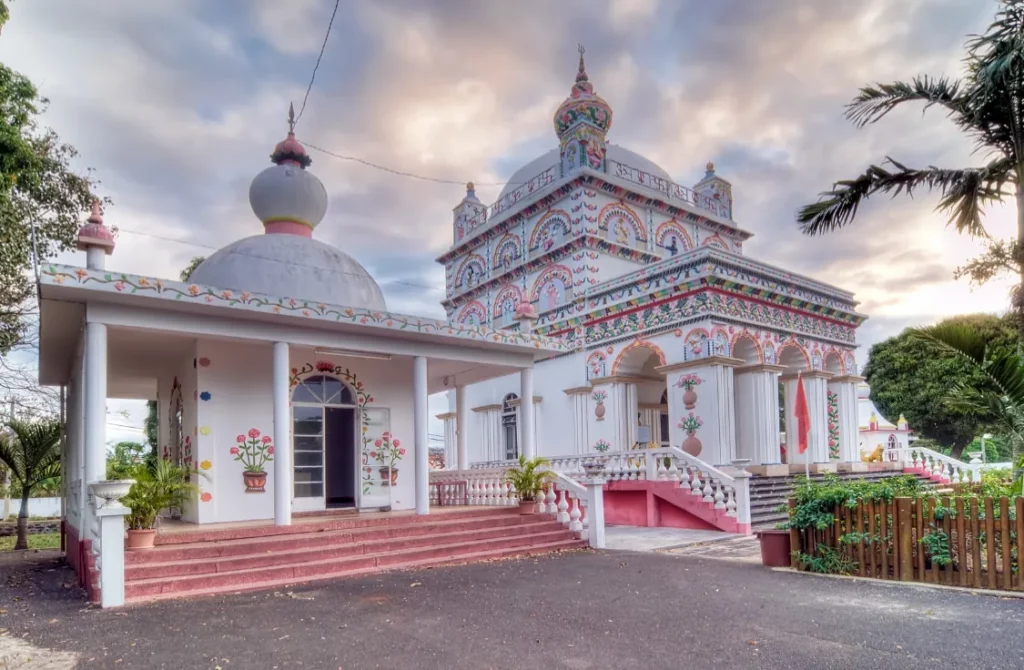
The Maheswarnath Mandir Hindu temple, located in Triolet, near Trou aux Biches, is the largest in Mauritius. Dedicated to Shiva, its pastel colours and minimalist architecture are rather unusual for a temple of this size. Renovated in 2006, it inspires peace and serenity. A guided tour allows you to discover in detail the history and peculiarities of this symbolic place of worship in Mauritius.
Go there: The temple is accessible by bus, with a stop at the terminus of Triolet, on foot from the city centre of Triolet or by car.
Natural sites to explore and hikes not to be missed
Le Morne Brabant: the Black River Mountain
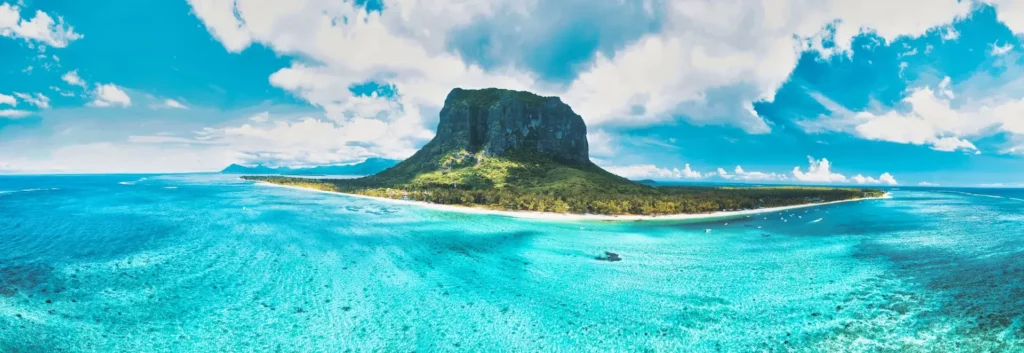
Ranked a UNESCO World Heritage Site, the Morne Brabant overlooks the Indian Ocean from the height of 550 metres above sea level. Attraction of the Black River district, this unique mountain is the favorite excursion for hikers. Reserved for experienced walkers, its ascent, though difficult, is worth a lot of effort. At the top, a breathtaking panorama awaits you. Whether hiking or trail running, the route is done in 3 to 4 hours.
Below, the beach of Morne Brabant offers a moment of relaxation after the effort, perfect for those who have renounced the climb. Considered one of the most beautiful beaches in Mauritius, with its white sand and translucent water, it is also the ideal place to enjoy nautical activities.
Return: Le Morne Brabant is located in the Black River district. The site is accessible by bus, with a stop at « Dinarobin », by car, or on foot for the bravest.
The Earth of the Seven Colors: Chamarel's Geological Treasure
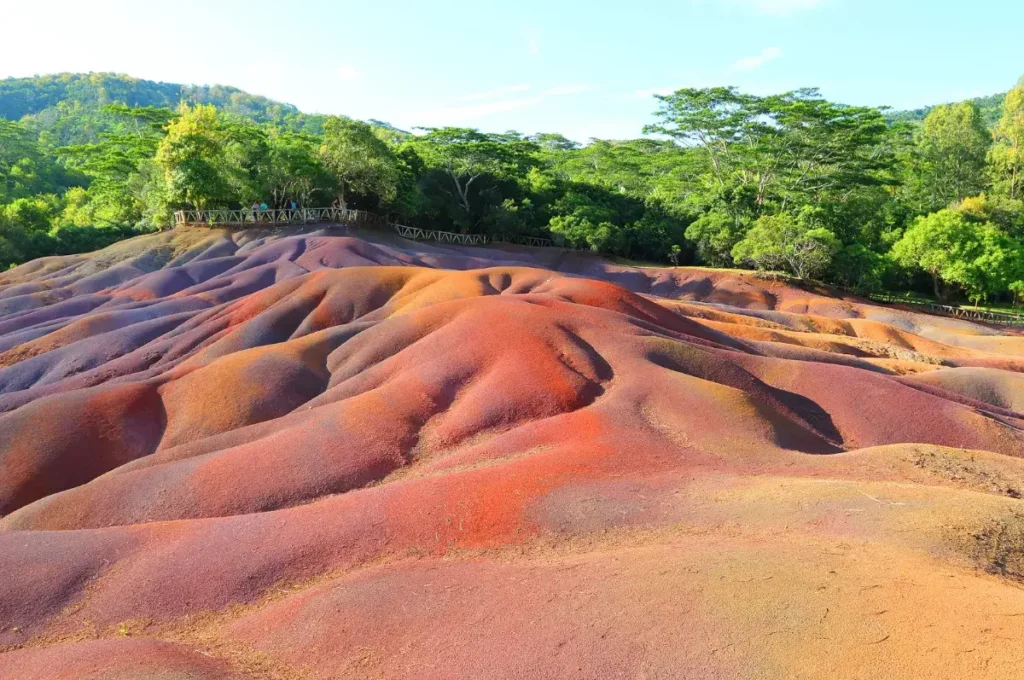
Other excursions to Mauri Islandthis, the park of the Earth of 7 colors in Chamarel. The Earth of 7 colors is a real natural treasure. Shaped for millions of years, the rocks of this park bear witness to the geological history of the island. The dunes carved by rain and wind offer a variety of colours, changing according to the rays of the sun. This natural phenomenon is due to the presence of different minerals in the soil, such as iron and aluminum oxides, creating a colorful and captivating landscape with shades ranging from red to brown and from blue to green. A mobile app will allow you to learn more about this amazing place.
The geopark also houses the highest waterfall of the island: the Chamarel waterfall, which descends for a hundred meters. You can also observe giant turtles from Aldabra (Seyles archipelago). The natural setting and serene atmosphere of the site make it a pleasant destination for a hike.
Go there: The Earth Park of 7 colors is located in ChAmarel, in the Black River district, between Le Morne and Case Noyale. It is easily accessible by car, and it is advisable to get there by taxi for convenience. This site is a step not to be missed to discover the natural beauties of Mauritius.
Piton Canot: stunning views of the west coast of Mauritius
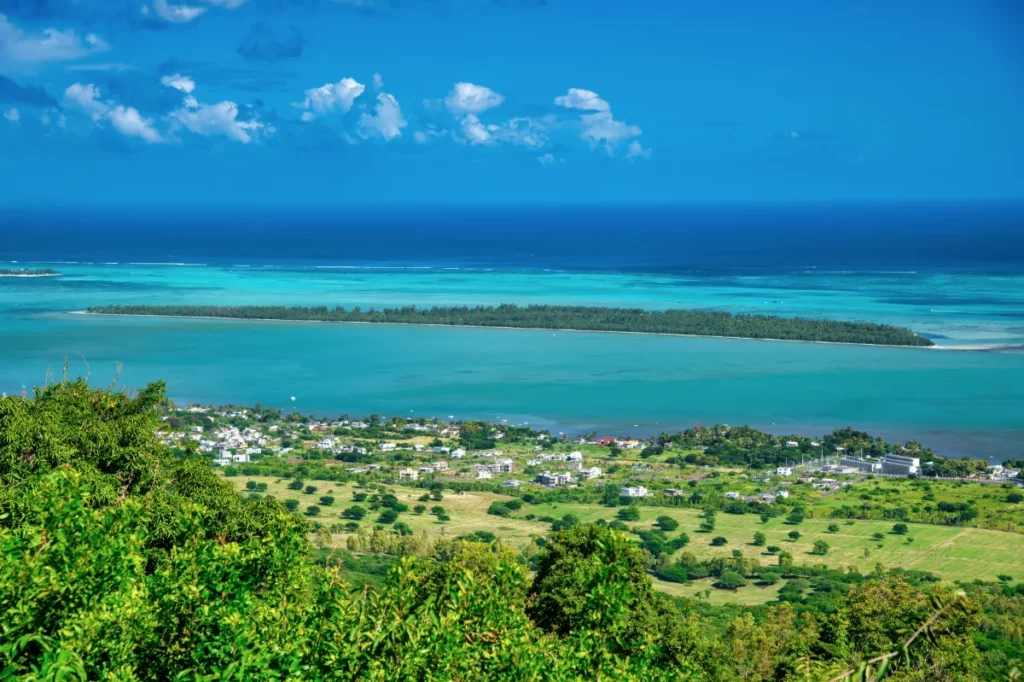
After the Morne Brabant, the Piton Canot is one of the most beautiful panoramas to discover in Mauritius. Nevertheless, the stunning view of the Mauritian west coast is worthy. This hike that takes 1 to 2 hours can be addressed to beginner hikers on the first part. On the other hand, the end of the climb is difficult and reserved for experienced hikers. The paths are steep and the climb is steeper, those who reach the top are rewarded with a spectacular panorama. As you climb, you will have the opportunity to admire the vegetation of the island: colorful flowers, majestic trees and lush undergrowth.
Go there: The hike starts next to the restaurant Le Chamarel, parking is available to park.
Trou aux Cerfs : Curepipe's sleeping volcano
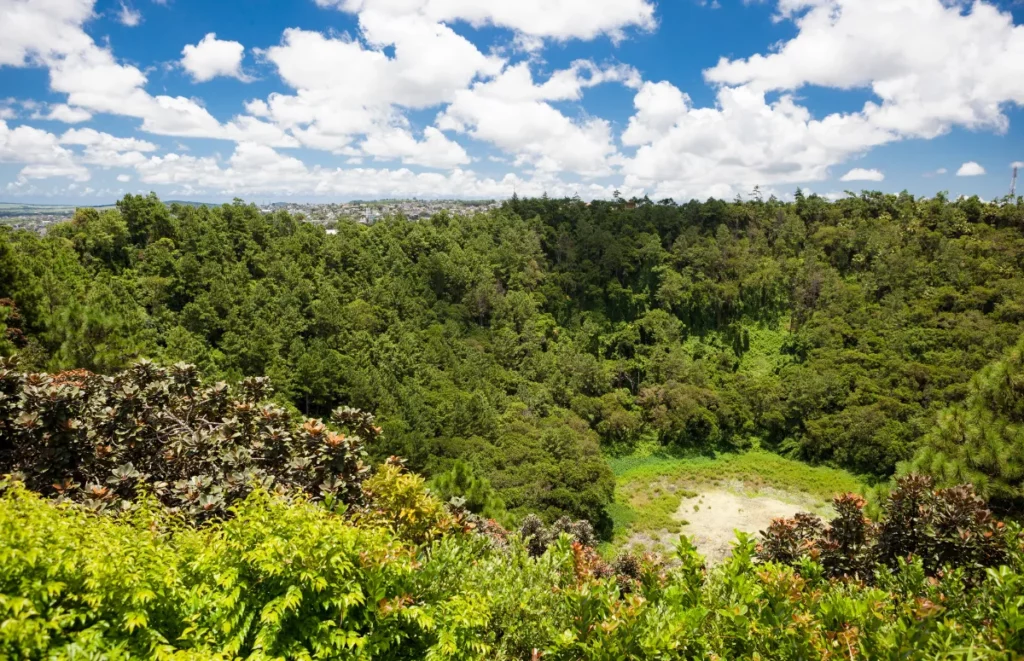
Trou aux Cerfs is a well-known volcanic crater in Mauritius. Deep about a hundred meters, it houses a lake in its center. Although it is not possible to descend to the water point, you will have a very nice view from the edge of the crater. This natural site is a witness to past volcanic activity on the island.
Return: Located between Floréal and Camp Caval, a few minutes from Curepipe, Trou aux Cerfs is accessible by car, walk or bus, with a stop at the station « Darne ». Parking is available nearby to facilitate access to visitors.
Natural Bridge: an attraction not to be missed in Grand Port
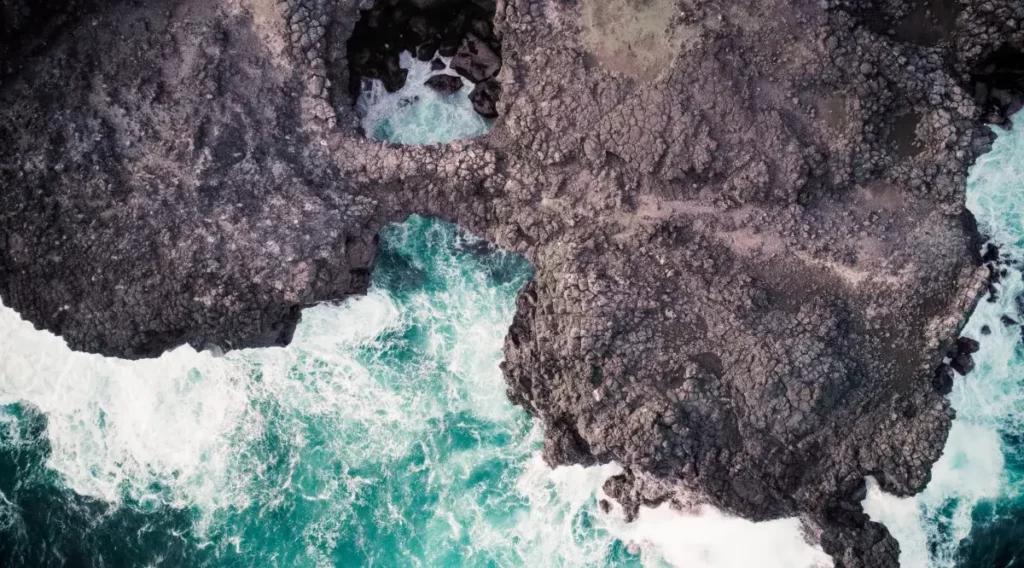
To the south of the Grand Port district, the Mauritius Natural Bridge is a volcanic rock formation carved by erosion. It is an unusual place and ideal for lovers of nature and authenticity. In this part of the island, you will not find a sandy beach, but you will become aware of all the power of the ocean. During your expedition to the heart of the cliffs, you will admire the fascinating sight of the waves striking the rock with strength.
Return: The Natural Bridge of Mauritius is accessible through the village of Lscalier or the village of Trois Boutiques. The path to get there is perfect for nature lovers and hikers.
Places dedicated to the relaxation and discovery of Mauritius
Crystal Rock: the jewel of Mauritius' west coast
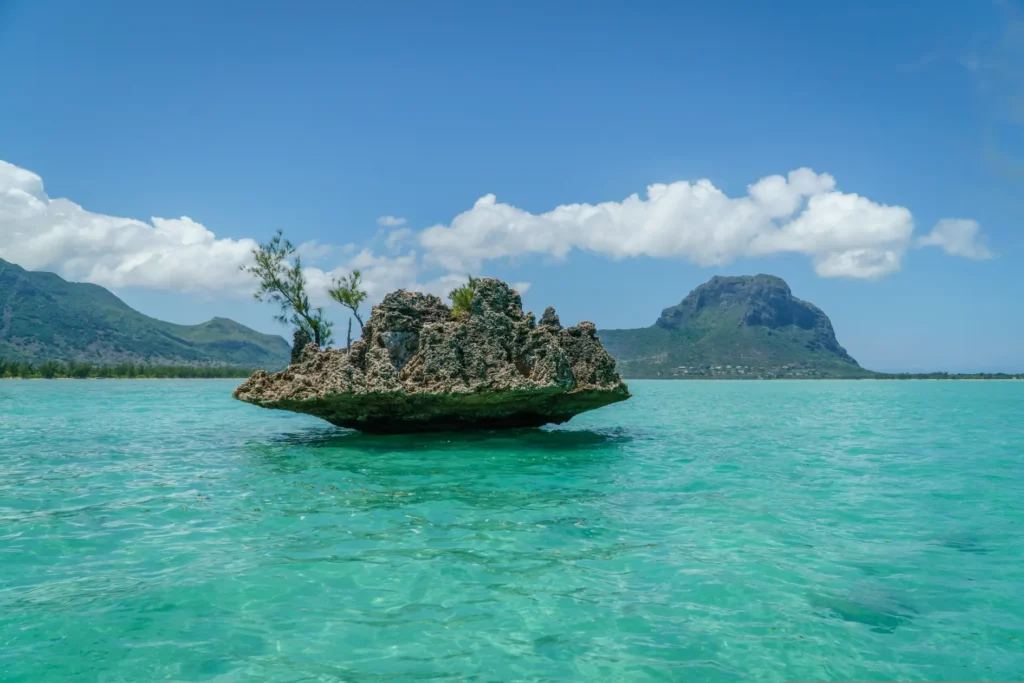
Located in the lagoon between the bay of Morne and the island of the Biens, Crystal Rock is a remarkable fossilized coral formation of Mauritius. Transparent water and proximity to Le Morne Brabant make it a favourite place for water sports enthusiasts such as snorkeling and scuba diving.
Go there: The crystal rock is accessible by boat from the bay of Morne and the island of Bieniers. It is recommended to use local excursions for an optimal experience.
Eureka House: vestige of colonial era to Moka
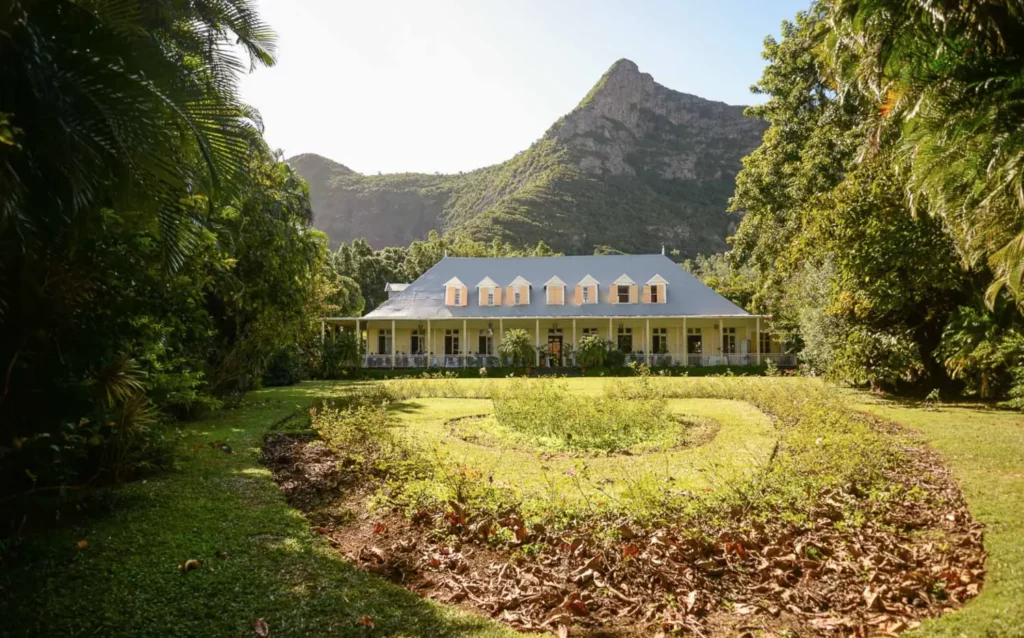
Former master house with 109 doors and windows, Eureka House is now a museum in the Moka district, witness of the colonial era. This place charged with history centralizes antiques and authentic furniture of this period. The guided tour of the colonial residence and the surrounding nature reserve takes you into the history of Mauritius' plantations.
To extend this immersion, the museum restaurant welcomes you for lunch. You can also stay on site thanks to a few independent guest houses.
Go there: A visit to the Eureka House, its gardens and waterfalls is paid for. It is accessible by car from Mount Ory Road in central Mauritius. Parking is available nearby to facilitate visitor access.
Sir Seewoosagur Ramgoolam: Pamplemousse Botanical Garden
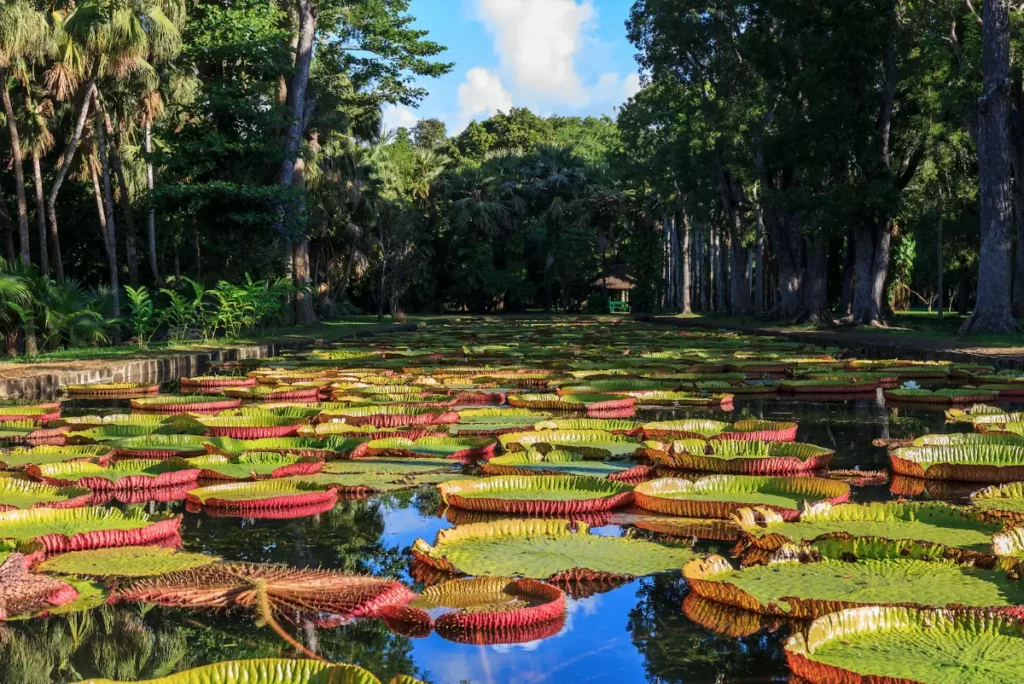
The Pamplemousses Botanical Garden is the most famous in Mauritius. This place is also known as Sir Seewoosagur Ramgoolam Botanical Garden. Nelson Mandela, Indira Gandhi and François Mitterrand each marked their passage to Mauritius by planting a tree. This park has many plant species, including 95 varieties of palm trees, baobabs, talipots, etc.
A walk through the garden invites you to photograph ponds filled with giant water lilies, shady alleys lined with exotic plants and the tropical greenhouse. The garden is also an ideal place for picnics, with specially designed areas for visitors.
Return: The Pamplemousses Botanical Garden is easily accessible by car or bus. Parking is available for visitors arriving by car. By bus, get off at the stop « Botanical garden », near the main entrance.
Albion Lighthouse: Pointe aux Caves lighthouse
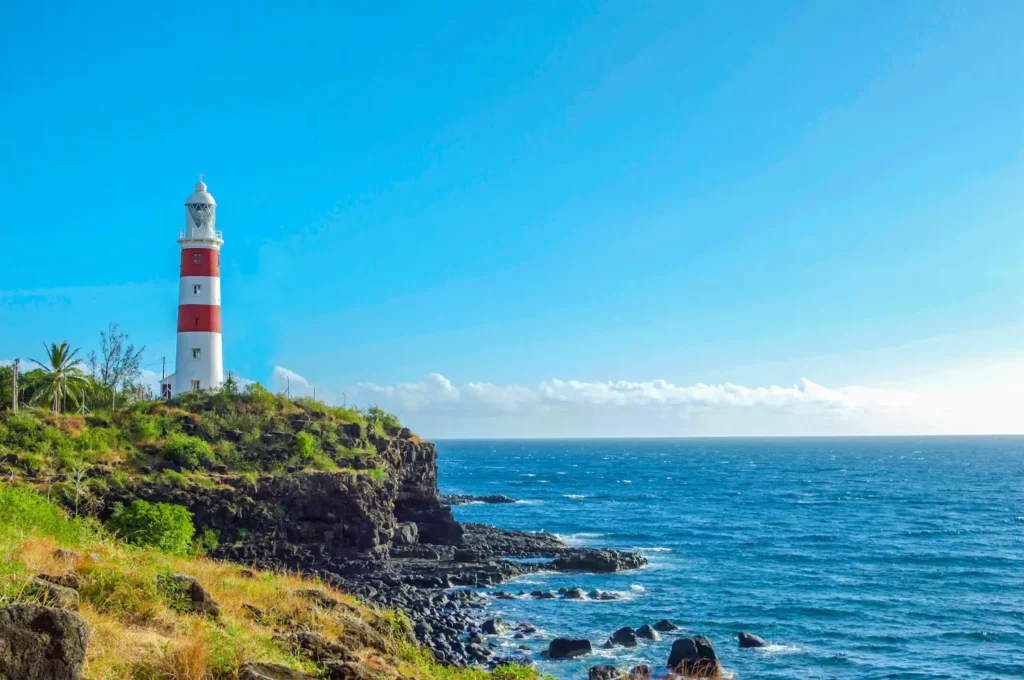
On foot or by bike, walk along the steep coasts of Albion. Its desert reliefs, rocks and lighthouse make it a different place from Mauritius' tourist towns. Otherwise known as the Pointe aux Caves lighthouse, the Albion lighthouse is visited on presentation of an ID. The caretaker himself welcomes you and lets you discover this 30-metre structure erected on the edge of a cliff, on the Mauritius west coast. The lighthouse offers panoramic views of the island and ocean, as impressive by day as by night.
Go there: The Pointe aux Caves lighthouse is located north of the village of Albion. It is possible to get there by bus, coming down to the Terminus of Albion. The rest of the trip is on foot for good walkers or by car.
Through these 15 must-visit sites in Mauritius, it is easy to understand why this island is called the jewel of the Indian Ocean. Mauritius is much more than just a holiday destination; It is a fascinating country whose history reveals itself through its landscapes, monuments and traditions.
Updated article:


